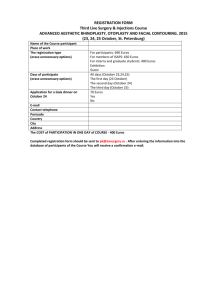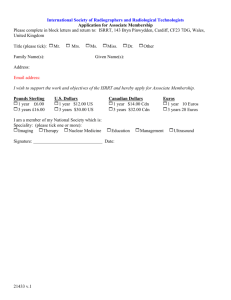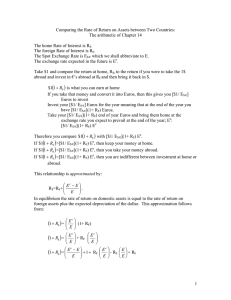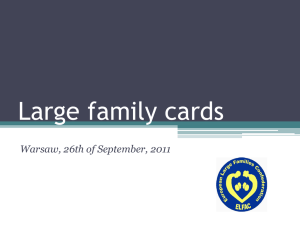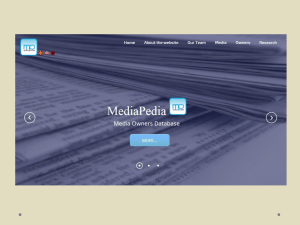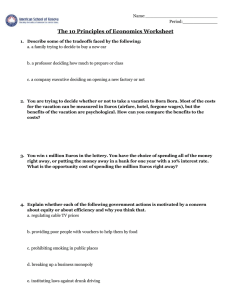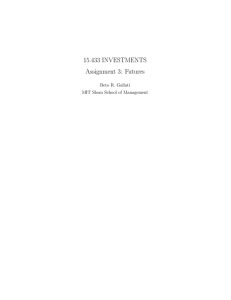Document 13615263
advertisement
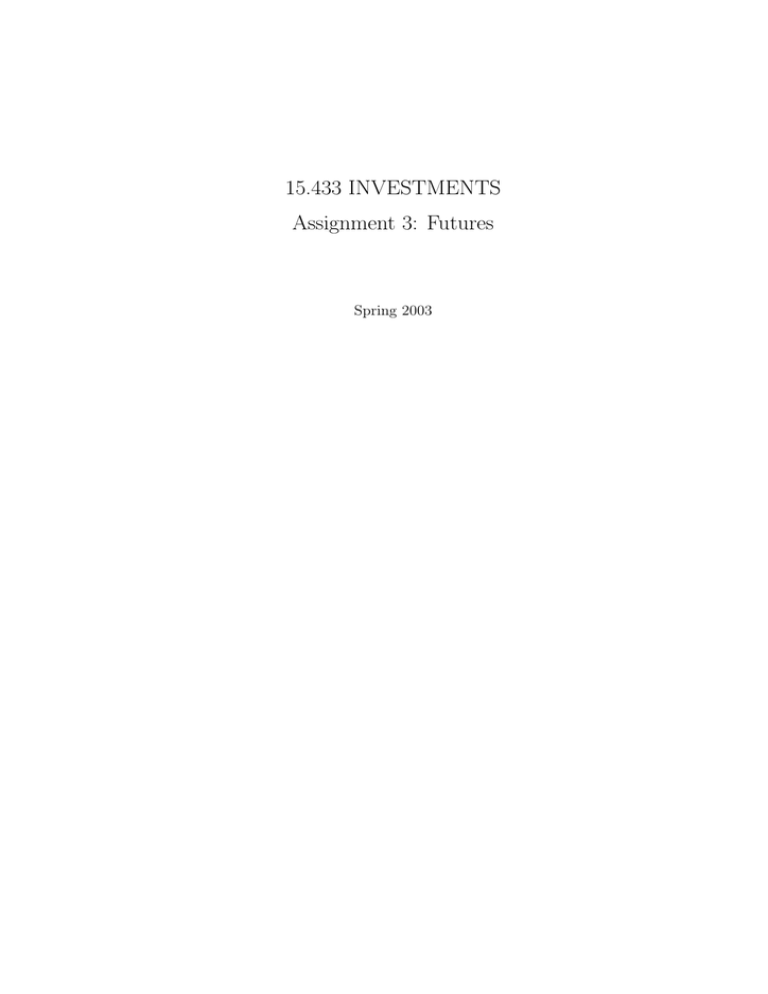
15.433 INVESTMENTS Assignment 3: Futures Spring 2003 1. A futures contract is available on a company that pays an annual dividend of $5 and whose stock is currently priced at $200. Each futures contract calls for delivery of 1,000 shares of stock in one year, daily marking to market, an initial margin of 10% and a maintenance margin of 5%. The current Treasury bill rate is 8%. (4 points) (a) Given the above information, what should the price of one futures contract be? (0.5 points) (b) If the company stock decreases by 7%, what will be, if any, the change in the futures price? (0.5 points) (c) As a result of the company stock decrease, will an investor that has a long position in one futures contract of this company realize a gain or a loss? Why? What will be the amount of this gain or loss? (1 point) (d) What must the initial balance in the margin account be? Following the stock decrease, what will be, if any, the change in the margin account? Will the investor need to top up the margin account? If yes, by how much and why? (1 point) (e) Given the company stock decrease, what is the percentage return on the investor’s position? Is it higher, equal or lower than the 7% company stock decrease? Why? (1 point) 2. You have recently been appointed CFO of a large multinational corporation based in Frank­ furt. The CEO has asked you to raise 8,000,000 Euros one year from now to fund a strategic investment. The company has to raise the capital either through a U.K. (in £) or a Germany (in Euros) based bank. The annual interest rates on U.K. and German bills are 8% and 6% respectively. The current exchange rate is 1.5 Euro per 1 £and the futures price for delivery one year from now is 1.46 Euros per 1 £. (4 points) (a) Where would you lend and where would you borrow? (0.5 points) (b) You realize that given the above data, you can benefit from an arbitrage opportunity that would allow you to raise the necessary capital at no cost for the company. Describe in a table like the one below the necessary actions (and associated cash flows in Euros) you need to take now and in one year in order earn 8,000,000 Euros in one year at no cost. (2 points) Action Now Cash Flow in Eu­ Action in 1 Year ros Total Cash Flow in Eu­ ros* Total (c) Assuming the interest rates and the current exchange rate given above are correct. What should the futures price of 1 be in Euros according to the interest rate parity theorem? (0.5 points) (d) Discuss why wouldn’t all investors decide to invest their money in the U.K., even though the interest rate in the U.K. (8%) is higher than in Germany (6%.) (1 point) (e) They may not because the Euros may be appreciating relative to the £. It is true that investments in Germany will grow less than investments in the U.K. but it is also through that as time passes 1DM is worth more . This appreciation of the Euros with respect to the can be seen by the fact that E0 is 1.5 Euros/1 £while F0 is 1.47 Euros /1 £. The future appreciation of the Euros with respect to the compensates for the difference in interest rates between the two countries. 3. You are required to make a payment of 1,000,000 euros in each of the next four years. Your revenues are in dollars and the current dollar-euro exchange rate is $.90 per euro. You believe that the dollar will depreciate and would like to lock in the four payments of 1,000,000 euros each at today’s exchange rate. In order to do so you decide to enter into a swap agreement. Assume that the U.S. and euro yield curves are flat at 6% and 8% respectively. (2 points) (a) What will be the swap rate on this agreement to exchange currency over a four-year period? (2 points) Note: Remember that a swap can be viewed as a portfolio of forward transactions, but instead of each transaction being priced independently, one unique forward price is applied to all transactions.
